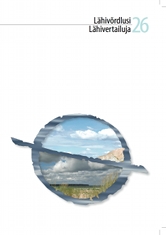Iteratiivse või duratiivse tegevuse väljendamisest vene ja eesti keeles
On expressing iterative or durative action in Russian and Estonian
Author(s): Sirje Kupp-SazonovSubject(s): Language and Literature Studies, Foreign languages learning, Finno-Ugrian studies, Eastern Slavic Languages
Published by: Eesti Rakenduslingvistika Ühing (ERÜ)
Keywords: contrastive analysis; iterativity; durativity; Russian; Estonian;
Summary/Abstract: The article focuses on different ways of expressing iterative or durative action in Russian and Estonian. Comparing original Russian texts to their translation in Estonian, it is noticeable that in Estonian one has to use more linguistic features to express iterative or durative action than in Russian. In order to express those meanings in Russian, it is very often enough to use a verb in the imperfect tense, while all other possible instruments (such as adverbs, reduplication of verbs, whole context, etc.) just have a supporting function. Meanwhile in Estonian, for example, adverbs can play the most significant role in expressing iterative or durative action and without them, the sentence can be understood in more than one way. In the article, numerous examples of iterative or durative action are presented and analyzed. It is shown that both languages have some similar ways of expressing those meanings: for example, adverbials, context, reduplication of verbs, tenses, semantics of the verb etc. But there are also some tools that remain specific to one language; for Russian this is mainly verb tense, and for Estonian one can point to the object case and a construction of the verb to be (olema) + inessive form of the supine. The results of this analysis could be used in teaching Russian and Estonian, but also in the theory and practice of translation.
Journal: Lähivőrdlusi. Lähivertailuja
- Issue Year: 2016
- Issue No: 26
- Page Range: 251-281
- Page Count: 31
- Language: Estonian

